How to write a brief in 10 steps

The briefing is a crucial phase in which all the information needed is collected to allow the marketing and communications team, and consequently all the departments involved, to develop an effective strategy. In this initial phase, the company or agency in charge acquires a detailed vision of what the client wants, the market in which it operates and the peculiarities of the product or service to be promoted. Subsequently, the project manager or account manager takes care of drafting the brief, a document that summarizes all the information collected about the client, the product and the project. A well-written brief, which includes clear objectives, precise requests and constraints defined by the client, becomes the basis on which the marketing plan and the communications strategy are built.
For this reason, it is essential to carefully collect all the information starting from the interview phase with the client, making sure to obtain all the data necessary for marketing analysis and the definition of the copy strategy.
Below, we present a 10-step guide to writing a clear, complete and functional brief:
1. The Market
The market represents the context in which a company and its product or service operates. Understanding its dynamics is essential to develop an effective and targeted marketing strategy. During the analysis phase, it is important to ask a series of key questions to obtain a clear and complete vision.
- What is the overall market volume?
Market volume is the total value of sales or revenue generated by all similar products or services in the market. Understanding this figure helps define the size of growth opportunities and determine how competitive the market is. The larger the volume, the more room there may be for new entry, but it may also indicate the presence of established players with whom you will need to compete.
- How is the market divided?
The market could be segmented into various categories based on criteria such as geographic area, type of customer, type of product or service, sales channel, etc. Analyzing this segmentation is essential to identify specific niches or geographic areas where the product could have a competitive advantage. This type of analysis allows you to focus your marketing efforts on the most profitable areas or those less served by your competition.
- What are the short, medium and long term prospects?
The market growth prospects are also crucial. A growing market can offer numerous growth opportunities, while a stagnant or declining market may require more aggressive strategies to maintain market share. It is useful to understand how consumer trends, technological innovation, regulatory changes and any external factors that could affect demand will evolve in the short (6-12 months), medium (1-3 years) and long term (over 3 years).
- Where and how will the product or service be sold?
It is important to understand the distribution channels through which your product will reach consumers. Will it be sold online, in brick-and-mortar stores, through specialty retailers, or in other ways? What are the geographic markets of interest (local, national, international), and how does distribution vary depending on the channel chosen? The effectiveness of your distribution strategy can determine much of your business success, and knowing how and where your product will be positioned is crucial to properly planning your launch and promotion.
Analyzing the market in depth allows you to identify both opportunities and threats, defining a strategic roadmap that maximizes the chances of success.
2. The Competition
Analyzing the competition is a fundamental step in understanding the positioning of a company or product within the market. This process allows you to identify strengths and weaknesses compared to competitors, recognize opportunities to differentiate yourself and anticipate possible reactions from competitors. Tools such as canvases for positioning and SWOT (Strengths, Weaknesses, Opportunities, Threats) analysis are useful for mapping the competitive context and planning an effective strategy.
- Who are the main competitors?
Identifying your main competitors is the first step in understanding who your company will be competing with. Competitors can be direct (those who offer the same type of product or service) or indirect (those who satisfy the same consumer needs, but with different solutions). It is important to create a detailed list of competitors, analyzing not only established brands, but also any new entrants to the market, which could represent a long-term threat.
- In which market segment do they operate?
Each competitor may operate in a specific segment of the market, such as high-end, mid-range, or budget, or may focus on specific geographic areas or customer niches. Understanding each competitor’s segment helps you identify opportunities to differentiate. For example, if a competitor is strong in the premium segment, there may be room for a mid-range product that offers value at a more affordable price.
- What reactions can you expect from competitors when introducing a new product?
Anticipating possible reactions from competitors is essential to anticipate the challenges that may arise. Competitors can react in different ways, such as lowering prices, launching aggressive advertising campaigns, innovating their products or improving the services offered. Evaluating these potential responses allows you to prepare effective countermoves, maintaining a competitive advantage. Furthermore, understanding how competitors have responded in the past to changes in the market can provide useful indications on how they may behave in the future.
- What are the strengths and weaknesses of our product compared to the competition?
Comparing your product or service to those of your competitors allows you to clearly identify which strengths can be exploited and which weaknesses need to be corrected. For example, a strength could be the superior quality of the product, a competitive price or excellent customer service. On the other hand, a weakness could be a lower brand recognition or less widespread distribution. This analysis allows you to focus on the aspects that differentiate the product and that can constitute a competitive advantage in the long term.
Analysis tools:
- Positioning Canvas : A visual tool that allows you to map the positioning of your product compared to the competition, analyzing variables such as price, quality, and customer perception. It helps identify market gaps in which the product can fit.
- SWOT Analysis : SWOT analysis is a classic tool that allows you to evaluate the strengths (Strengths) and weaknesses (Weaknesses) of the product or company, as well as the opportunities (Opportunities) and threats (Threats) in the market context. This helps to highlight the areas to focus on and those to intervene on.
An accurate competitor analysis provides a comprehensive view of the competitive landscape, allowing you to develop more effective positioning strategies and make the most of existing opportunities.
3. The Product/Service
Analyzing and understanding the product or service you intend to promote is essential to define the marketing and positioning strategy. Every detail regarding the product must be clear and documented, in order to build a coherent and convincing message for the target audience. The following questions help to outline a complete and strategic vision of the product.
- What is the name of the product/service?
The name of the product or service is one of the fundamental aspects of its success, since it represents the first impression that the public will have of it. It must be easy to remember, evocative of the benefits offered and consistent with the company brand. A good name can influence the consumer's perception, facilitating its recognition and differentiation from competitors. Furthermore, it is important to evaluate whether the chosen name is protected by copyright or whether there are other products with similar names that could create confusion.
- What are the sales expectations?
Sales expectations are related to the prediction of how the product will behave in the market. This assessment is based on a series of factors, such as production volume, target audience needs, distribution capacity and price. Defining sales expectations helps to plan the budget, production and promotional campaigns. It is useful to have a short, medium and long-term projection to verify whether the product meets or exceeds the sales targets set. Furthermore, sales expectations can vary depending on the distribution channel (online, retail, specialized distribution, etc.) and the pricing strategies used.
- What is your ideal positioning on the market?
Positioning a product is how consumers perceive it in relation to its competitors. Defining the ideal positioning means determining the market segment and price range to which the product is aimed. Positioning should answer a series of questions: Is the product aimed at being premium, budget or mid-range? Is it aimed at a niche market or a broad mass audience? What are the key values and benefits that differentiate the product from others on the market?
Correct positioning takes into account the value perceived by the customer, the Unique Selling Proposition (USP) of the product and its distinctive characteristics. For example, an innovative technological product could be positioned as a high-end solution for demanding customers, while a mass-market product could aim for a competitive quality-price ratio to attract the widest possible audience. Positioning guides all strategic decisions, from packaging to communication, and influences how the product will be perceived in the market.
Additional elements to consider for product/service analysis:
- Distinctive Features : What makes the product unique compared to the competition? What innovations or improvements does it offer compared to products already on the market? Distinctive features can vary based on the technology used, the design, the additional features or the quality of the materials used.
- Consumer Benefits : What problems does the product solve or what needs does it satisfy? It is important to focus on the tangible and intangible benefits that the consumer will get from using the product. For example, a tangible benefit could be the durability or efficiency of the product, while an intangible benefit could be the improvement of lifestyle or the emotional gratification resulting from use.
- Product Life Cycle : Considering which stage of the life cycle the product is in (introduction, growth, maturity, or decline) helps plan specific strategies for each stage. A product in the introduction stage will require an aggressive launch and promotion strategy, while a product in the maturity stage will need to focus on maintaining customer loyalty and differentiating itself from the competition.
A thorough understanding of these aspects allows you to develop a more precise and targeted marketing strategy, capable of effectively communicating the product's strengths and conquering the target market.
4. The Price
The price of a product or service is one of the key elements in determining the success of a marketing strategy. Pricing is not just about monetary value, but is also an essential component in communicating the positioning of the product in the market, influencing consumer purchasing decisions and differentiating from competitors. An accurate analysis of the price requires the consideration of several factors, such as production costs, the desired profit margin, consumer perception and comparison with the competition.
- What is the price of the product/service?
Setting the price of the product or service requires a careful evaluation of numerous internal and external factors. On the internal side, you have to consider the costs of production, distribution, marketing and sales, as well as an adequate profit margin. The price must cover all these costs and, at the same time, ensure a sufficient profit for the company. On the external side, you have to take into account the value perceived by the consumer, which does not always correspond to the simple cost of production. If the product has unique characteristics or offers significant added value, the price may be higher than the market average.
Price must also take into account the overall strategy of the company. Do you want to position yourself as a market leader in terms of quality and uniqueness, with a high price that reflects this position, or do you want to focus on high sales volumes with a competitive price? The choice of price has a direct impact on the perception of the brand: a higher price could suggest a higher quality, while a low price could attract a larger customer base but generate less profit per unit sold.
- How does it position itself compared to competitors?
A crucial aspect in defining the price is the comparison with competitors. It is important to analyze the price of similar products or services offered by competitors, evaluating whether you want to position yourself higher, equal or lower than them. This decision will largely depend on the positioning of the product and the perception of added value compared to the competition.
If the product offers superior features, design, or benefits, a higher price may be justified and communicate the idea of premium quality to the market. On the other hand, a lower price than competitors can be an effective strategy to gain market share quickly, especially if the product has a good perception of quality despite the low cost.
It is also important to consider price elasticity, or the market's sensitivity to price changes. If your target is very price sensitive (cost-conscious consumers), even a small price reduction could lead to a significant increase in sales. On the contrary, if the target is less price sensitive, it may be possible to maintain higher prices without losing customers, focusing instead on perceived quality and added value.
Factors to consider in your pricing strategy:
- Production and distribution costs : The price must cover all costs associated with the creation and distribution of the product, ensuring a sustainable profit margin.
- Perceived value : How does the consumer perceive the value of the product compared to the asking price? Perceived value is influenced by factors such as quality, brand image, customer reviews and the overall shopping experience. Even if the production costs are low, if the perceived value is high, a higher price can be justified.
- Price Elasticity : Is the demand for the product elastic or inelastic? In an elastic market, small changes in price can have a large impact on sales, while in an inelastic market, price changes have a smaller effect on demand.
- Competition : What are your competitors' prices and what pricing strategies do they use? Analyzing your competition helps you understand how your product is positioned in the market and what price could be more competitive. However, you don't always have to compete on price: if your product offers unique value, it may justify a higher price.
- Pricing strategies : There are different pricing strategies that a company can adopt, such as penetration pricing (low prices to quickly enter a market and gain a customer base), premium pricing (high prices to position the product as high quality), or psychological pricing (prices that appear lower thanks to techniques such as 9.99 instead of 10 euros).
A well-calibrated price not only allows you to maximize profits, but also to communicate the right image of the product and the brand, and to adapt strategically to market conditions and competition.
5. The Target Group
Identifying and understanding the target group, that is, the group of consumers to whom the product or service is addressed, is essential to develop a targeted and effective marketing strategy. Knowing your audience allows you to adapt the message, the communication channel, the positioning and even the product itself to meet the specific needs of the target market. Analyzing the target group means not only understanding who the potential customers are, but also going into the details of their habits, desires, needs and expectations.
- Who is the product/service aimed at?
Clearly defining who the target audience is is the first step in creating an effective marketing strategy. Is the product intended for a mass audience or a specific niche? Is it aimed at individuals or businesses? Is it aimed at a local, national or international target? Understanding who the product is intended for helps choose the most appropriate distribution and communication channels, as well as outlining the tone and style of the communication itself.
- What are the demographic and psychographic characteristics of your target audience? Have you defined personas?
An audience analysis cannot be limited to demographic characteristics (age, gender, income, education level, profession, marital status, place of residence), but must also include psychographic aspects that go deeper. Psychographic characteristics concern the attitudes, values, lifestyles, interests and opinions of the audience. This information allows you to segment the audience in a more detailed way and create personalized messages that resonate with their deepest motivations.
Personas are fictional profiles that represent in detail different segments of the target audience. Each persona is built from real data and includes demographic and psychographic information, as well as needs, wants, concerns and challenges that the product could solve. Creating personas helps focus marketing efforts on specific consumer archetypes, allowing for more personalized and targeted communication.
- What needs or desires does our product satisfy?
Every product or service must satisfy one or more needs or desires of the target audience. The key to an effective marketing strategy is to understand what these needs are, whether they are practical, emotional or psychological. For example, a product can satisfy a functional need, such as solving an everyday problem (e.g. saving time or money), or it can respond to an emotional desire, such as making the consumer feel special or improving their quality of life.
Deeply understanding the needs and desires of the target allows you to position the product as the ideal solution for the consumer, highlighting the most relevant benefits for their lifestyle and expectations.
- Why should consumers choose our product over a competitor's?
The Unique Selling Proposition (USP) plays a fundamental role in this phase. Understanding what makes the product unique compared to competitors is crucial to differentiate it in the market. Consumers should be convinced to choose the product for a variety of reasons, such as superior quality, best value for money, innovation, excellent customer service or shared values with the brand. The ability to clearly and forcefully communicate these differentiating elements determines the perception of the value of the product and, consequently, the purchase decision.
Additionally, consider any barriers to purchase, such as price, lack of brand or product awareness, and how to overcome them, perhaps through free trials, promotions, or educational campaigns.
- How often should it be purchased?
Purchase frequency depends on the nature of the product or service. Some products are designed for a one-time purchase, while others are designed for repeated or regular consumption. For example, fast-moving products (such as food and beverages) require frequent purchase, while durable goods (such as appliances or cars) have a longer purchase cycle. Knowing the purchase frequency allows you to plan specific marketing actions, such as promotions or loyalty campaigns to encourage repeat purchases.
For products with a high purchase frequency, it is important to evaluate retention strategies to keep customers loyal and ensure that they choose the product repeatedly over time. On the contrary, for products with a longer life cycle, it will be crucial to focus on quality and after-sales service to ensure customer satisfaction and promote positive word of mouth.
Additional items to consider:
- Purchasing behavior : Understanding the purchasing habits of the target is essential. Does the public tend to inform themselves a lot before making a purchase? Do they prefer to buy online or in physical stores? This information influences the choice of the most suitable communication and sales channels.
- Social Influences : Purchase decisions can be influenced by social factors, such as word of mouth, the opinions of family and friends, or online reviews. Identifying the main sources of influence of the target group helps to exploit these dynamics to promote the product.
An in-depth knowledge of the target group allows you to build more targeted marketing strategies that speak directly to the consumer and respond to their needs, desires and expectations, thus increasing the probability of success of the product on the market.
6. Marketing Objectives
Clearly defining marketing objectives is a crucial step in developing an effective strategy. Objectives provide clear, measurable direction on what you want to achieve and allow you to plan and track the actions needed to achieve the desired results. Marketing objectives should be specific, measurable, attainable, relevant, and time-bound (SMART). Depending on the type of product, the target audience, and the stage of the product life cycle, objectives can vary significantly. Here are some examples of common marketing objectives:
- Sell immediately
This objective is particularly suitable for little-known or recently launched products, where the urgency is to push the consumer to buy immediately. The marketing strategy must focus on creating desire and need for the product, with a strong and direct message, perhaps accompanied by limited-time promotions or discounts to encourage instant purchase. For example, campaigns such as "offer valid only today" or "buy now and receive a 20% discount" are effective in achieving this goal.
- Provide information
When it comes to complex, expensive, or technologically advanced products, one of the main objectives may be to educate the consumer and provide clear and detailed information that helps them make a purchasing decision. This type of objective is often associated with goods such as automobiles, industrial equipment, or business software, where the purchasing process is long and requires a deep understanding of the product's features and benefits. The marketing strategy in this case should include informative content, such as guides, brochures, video tutorials, or webinars, that allow the consumer to delve deeper.
- Push to the test
For new products or those that require a first-hand experience by the consumer to demonstrate their value, the goal may be to encourage trial of the product. This approach is common for products such as cosmetics, beverages, or tech gadgets, where a demonstration or free trial can encourage consumers to overcome their initial resistance and adopt the product. Examples of strategies to achieve this goal include free samples, limited-time free trials, or first-time purchase discounts.
- Create familiarity
When a product is already known in the market, but you want to strengthen its presence in the mind of the consumer, the marketing goal may be to create familiarity. This is often the case for consumer products or for already established brands, where the goal is to remain top-of-mind for the consumer. The marketing strategy may include frequent advertising campaigns, presence on the main communication channels and branding activities to keep the brand always present and recognizable. For example, continuous advertising on TV, on social media or in retail stores.
- Changing attitudes
In markets dominated by strong brands, or when a brand is struggling to penetrate an industry because of a long-standing preference for a competing product, the marketing goal may be to change consumer perception. This is a long-term goal that requires time and consistency, but can yield significant results. The strategy may include focusing on values that resonate with the public, differentiating the product by emphasizing aspects that the competition does not offer, or focusing on influential testimonials that can change the perceived image of the brand.
- Strengthen attitudes
This objective is essential for products or brands that are experiencing a decline in public perception, perhaps due to negative events, the entry of new competitors or a market evolution. The objective here is to reassure existing consumers of the quality of the product or service and regain trust and loyalty. Marketing strategies may include relaunching campaigns that reinforce brand values, public relations operations, improved customer service and promotions aimed at rewarding consumer loyalty.
Practical examples of marketing objectives:
1. Increase sales by 15% in the next six months – a specific, measurable goal that clearly defines a sales increase within a defined time period.
2. Increase brand awareness by 20% among target audiences within a year – useful for a new brand or a brand looking to expand its market presence.
3. Achieve a 5% conversion rate on website landing pages – aimed at improving the effectiveness of digital campaigns, such as online advertising.
Summary table of objectives:
| Goals | Suitable for | Purposes |
| Sell immediately | Little-known products | Push the potential consumer to purchase immediately |
| Provide information | Complex and expensive products | Push the consumer to want to learn more |
| Push to the test | New or little-known products | Encourage the consumer to try the product |
| Creating familiarity | Already known products | Keeping the brand in the mind of the consumer |
| Changing Attitudes | Markets with dominant competition | Changing negative brand perception |
| Strengthening attitudes | Products with declining image | Reassure existing consumers and restore confidence |
Defining well-structured, measurable marketing goals helps keep your strategy focused, align the efforts of all departments, and accurately measure progress toward desired results.
7. Unique Selling Proposition (USP)
The Unique Selling Proposition (USP) is the heart of the marketing strategy of a product or service and represents the key element that distinguishes it from the competition. It is a unique and clear statement that communicates to the consumer the main reason why they should choose that product instead of another. A well-defined USP allows you to effectively position the product on the market, attracting the attention of the target and motivating them to make a purchase decision.
A USP must be simple, incisive and easily understandable, but at the same time it must be built on solid foundations that demonstrate its validity. This statement must respond to three fundamental requirements: identify the main benefit offered, demonstrate the differentiation from the competition and underline the relevance of this benefit in the life of the consumer.
Here is a detailed analysis of these three aspects that make up an effective USP:
- The main benefit offered by the product
The first component of the USP is the key benefit that the product or service offers to the consumer. This benefit must be clear, concrete and answer a specific question: what makes this product useful or desirable for the customer? The benefit can concern different aspects, such as saving time or money, improving the quality of life, satisfying a need or solving a problem. For example, for a smartphone, the main benefit could be the exceptional battery life, while for a cosmetic product it could be the ability to visibly improve the skin in a short time. It is essential that the benefit is immediately recognizable and reflects a real need of the target audience.
- The exclusivity of the benefit compared to the competition
To be effective, the USP must not only identify a benefit, but must also demonstrate how this benefit is exclusive compared to what competitors offer. The concept of exclusivity implies that the consumer cannot obtain the same benefit from other products on the market, making your product unique and therefore highly desirable. This exclusivity can come from a technical feature, a patent, an innovative technology, a unique design or a different approach compared to the competition. For example, a clothing company could have a USP based on the use of sustainable and organic materials, while a technology platform could boast an unprecedented data processing speed in the industry.
Differentiation is especially important in saturated markets, where many products are perceived as similar. If your USP highlights what makes your product unique, it creates a competitive advantage that can make the difference between a consumer choosing your brand and that of a competitor. However, exclusivity must not be just a technical detail: it must be presented in such a way that consumers truly perceive the added value.
- The importance and relevance of the benefit to the consumer's life
Finally, a USP must be relevant to the consumer’s life. It’s not enough that the benefit you offer is unique, it must also be something that the target audience perceives as valuable and important. Relevance depends on whether the product satisfies a core need, solves a problem, or significantly improves the consumer’s experience. At this stage, it’s important to thoroughly understand your target audience: what are their key concerns, needs, and desires? For example, if you sell a health and wellness product, your USP should emphasize how the product can improve the consumer’s quality of life by reducing stress or increasing energy levels.
A relevant USP is closely linked to the psychology of the consumer, striking the right chords that influence their purchasing decision. To do so, it is necessary to understand not only the practical benefits, but also the emotional ones. For example, an electric car not only offers a practical benefit such as reduced fuel costs, but also an emotional benefit related to environmental sustainability and reduced ecological impact.
Examples of effective USPs:
- FedEx : "When it absolutely, positively has to be there overnight."
The main benefit is the speed of delivery. The exclusivity lies in the reliability of the promise. The relevance is related to the urgent need for delivery, which is crucial for the customer.
- Domino's Pizza : " You get fresh, hot pizza delivered to your door in 30 minutes or less – or it's free. "
The benefit is the speed of delivery. The exclusivity is the offer of a refund if the timing is not respected. The relevance is the immediate satisfaction of the consumer who wants a hot and fresh pizza in a short time.
- M&M's : " Melts in your mouth, not in your hand. "
The main benefit is the product's resistance to heat. The exclusivity lies in the fact that other chocolates melt more easily. The relevance is linked to the consumption experience, avoiding typical inconveniences for those who consume chocolate.
Additional components to consider in the USP formulation:
- Clarity and simplicity : A USP must be simple and easy to remember. Avoid complications or technical language that can confuse the consumer. The clearer the message, the more effective it will be.
- Emotion and Engagement : A USP that emotionally engages the audience is more likely to create a lasting connection with the brand. People tend to remember and choose products that evoke a positive emotional response.
- Proof of Benefit : It is important to support the USP with concrete evidence, such as data, testimonials, reviews or product demonstrations, that confirm the veracity of the promise.
Ultimately, a well-formulated USP not only sets your product apart from the competition, but creates an immediate connection with the consumer, demonstrating the real, tangible value your product brings to their life.
8. Reason Why
The Reason Why is the logical and compelling explanation that supports the Unique Selling Proposition (USP), providing the consumer with the specific reason why the product can deliver on its promise. If the USP is the element that captures attention, the Reason Why provides a solid foundation on which to build consumer trust, showing exactly how and why the product works or offers the benefits claimed. In other words, the Reason Why answers the consumer's question: "Why should I believe that this product can really do what it promises?"
For the Reason Why to be effective, it must be built on concrete and demonstrable facts that support the main promise. It can concern technical features, unique product specifications, materials used, innovative technologies or the manufacturing process that make the main benefit expressed by the USP possible. A well-formulated Reason Why helps reduce uncertainty and hesitation of the consumer, transforming the initial attraction into a convinced purchase decision.
Here are the key elements of an effective Reason Why:
- Technical or functional features that support the promise
The Reason Why must be based on objective data that demonstrates why the product can deliver on the promise expressed in the USP. For example, if a tire manufacturer claims that its tires offer better wet grip (USP), the Reason Why could refer to the use of advanced technology of special compounds that improve traction, or specific tests that confirm its effectiveness. The Reason Why, therefore, provides technical details and information that give credibility to the promise made, reassuring the consumer that it is not just marketing, but a real and demonstrable result.
- Evidence and testimonies
Another effective way to strengthen the Reason Why is to include evidence that the product works. This evidence can take many forms: laboratory studies, certifications, independent test results, feedback from real users, or expert reviews. These elements confirm the veracity of the promise made and show that the product actually has a positive impact on the people who use it. For example, an anti-aging cream can state in its Reason Why that it has been dermatologically tested on a sample of consumers, showing real results of skin improvement.
- Unique materials, ingredients or processes
If the product stands out for the materials or ingredients used, the Reason Why can emphasize this aspect as the key to keeping the promise. For example, an organic food product could base its Reason Why on the use of ingredients grown without pesticides, offering added value in terms of health and sustainability. Similarly, a technology product could leverage a patented or innovative technology that allows it to be more efficient or offer superior performance compared to competitors. Highlighting these elements allows you to further differentiate the product and justify its uniqueness.
- History and tradition of the brand
Sometimes, the Reason Why can be based on a brand’s reputation or track record in the industry. If a company has a long history or recognized expertise in producing a certain type of product, this becomes part of the Reason Why. For example, a luxury watch brand might emphasize its centuries-old tradition of craftsmanship and precision, which ensures that each watch offers the highest level of quality and reliability. In this case, the Reason Why leverages the trust that the brand has built over time, reassuring the consumer that the purchase is a good one.
- Continuous innovation and research
Another element that a Reason Why can be based on is investment in research and development. If the company is at the forefront of innovation and dedicates resources to creating better products, this can be a strong reason why the product is able to deliver on its promises. For example, an electronics company can base its Reason Why on the fact that it constantly invests in cutting-edge technologies, thus demonstrating that it is a leader in the industry and capable of offering the best performance on the market.
Examples of effective Reason Whys:
1. Coca-Cola Zero Sugar
USP: "The taste of Coca-Cola, without the sugar."
Reason Why: It uses a special formula with zero-calorie sweeteners that faithfully replicate the taste of classic Coca-Cola, without compromising the health of sugar-conscious consumers.
2. Dyson vacuum cleaner
USP: "Unprecedented suction power."
Reason Why: Dyson's patented cyclonic technology separates dust from the air using centrifugal force, eliminating the need for traditional filters and ensuring constant suction.
3. Volvo
USP: "The safest cars in the world."
Reason Why: Volvo's dedication to safety is underpinned by decades of innovation in active and passive safety features, such as advanced auto braking systems and crash tests that exceed industry standards.
How to Build an Effective Reason Why:
- Be specific : A generic or vague Reason Why is not convincing. Avoid phrases like "we use only the best materials" and provide precise details about what materials are used and why they are superior.
- Support with data : Objective data and concrete evidence, such as studies, tests or certifications, give strength to the Reason Why, reducing the uncertainties of the consumer.
- Demonstrate real value : It's not enough to say that the product works, you have to demonstrate how it improves the consumer's life or solves their problems in a tangible way.
- Combine emotion and rationality : Although the Reason Why must be based on facts, it can still evoke an emotion that reinforces the promise. A skincare product, for example, could combine dermatological facts with the promise of increased self-esteem through visibly healthier skin.
The Reason Why is the rational support that makes the promise made by the USP credible, providing the information necessary for the consumer to believe and trust the product. It creates a logical and tangible connection between what is promised and what the product can actually offer, reducing the perceived risk and making the purchase safer and more attractive. A well-articulated Reason Why, together with an effective USP, creates a strong competitive advantage, increasing its appeal in the market.
9. VRIO Model
The VRIO model is a strategic tool used to evaluate the competitive advantage of a product or service and measure its ability to compete effectively in the market. VRIO is an acronym that stands for Valuable, Rare, Inimitable, and Organized. These four factors help determine whether a product has the characteristics necessary to sustain a sustainable competitive advantage and whether the company is organized in such a way as to fully exploit these characteristics.
Examining a product through the VRIO model helps identify strengths to focus on, areas for improvement, and resources to protect to prevent competitors from replicating your success. Here's a deeper dive into each element of the VRIO model:
- Valuable (Value)
The first step of the VRIO model is to ask whether the product or service offers real value to the consumer. A product is considered "valuable" when it satisfies a market need or solves a significant problem for the target audience. A product that creates value for the consumer is able to improve their life, simplify a process or reduce the cost or effort needed to achieve a goal. For example, a new app that reduces the time needed to perform a certain task can be considered valuable if this benefit is perceived as important by its target audience.
Value can be tangible, such as efficiency or quality, or intangible, such as a sense of prestige or emotional fulfillment. A product that offers real value is one that consumers are willing to pay for because they recognize a concrete benefit, which makes it competitive in the market.
Questions to ask yourself:
- Does the product meet a market demand?
- What benefits does it offer to consumers?
- Do customers perceive the value the product offers?
- Rare (Rarity)
The second element of the VRIO model concerns the rarity of the product. A product is considered rare when its features, benefits or resources are not easily available in the market. If a product offers something unique or exclusive that competitors cannot easily replicate, this constitutes an important competitive advantage. Rarity can concern an innovative technology, a patent, a unique design or a scarce resource.
However, rarity alone is not enough if the product is not perceived as valuable. It is important that rarity is clearly communicated to the market, to make consumers understand that they will not be able to find the same value elsewhere.
Questions to ask yourself:
- Are the product or its main features rare or difficult to find on the market?
- Is there a unique technology, know-how or resource underlying the product?
- Is rarity relevant to the consumer?
- Inimitable (Inimitability)
Inimitability refers to the difficulty competitors have in copying or replicating the product. If a product is easy to imitate, the competitive advantage will be temporary, as competitors can quickly launch similar alternatives. A product is inimitable when it is based on resources or capabilities that are difficult to replicate, such as patents, trade secrets, a unique supply chain, or a strong brand reputation built over time.
Inimitableness can also derive from intangible factors, such as corporate culture, skills accumulated over time, or strategic relationships with suppliers. For example, a luxury brand can be inimitable not only for the quality of its materials, but also for the perceived exclusivity and consolidated image of the brand, which cannot be easily recreated by others.
Questions to ask yourself:
- How easy is it for competitors to replicate the product or its features?
- Is the product protected by patents, trade secrets, or other barriers to imitation?
- Does the brand reputation contribute to making the product inimitable?
- Organized (Organization)
Finally, even if a product is valuable, rare, and inimitable, to achieve and sustain a lasting competitive advantage, the company must be organized to fully exploit its resources and capabilities. This means that the company must have the right structures, processes, people, and strategies to manage and capitalize on the value of the product.
An effective organization is able to transform a potential competitive advantage into real business success. For example, a company that has strong manufacturing capabilities, a skilled marketing team, and effective market distribution will be able to make the most of its valuable, rare, and inimitable products.
Organization also concerns the coherence and strength of the marketing and communication strategy: an innovative product can lose competitiveness if it is not supported by an effective promotional campaign or adequate distribution. It is essential that all company components are aligned and support the success of the product.
Questions to ask yourself:
- Is the company structured to exploit the competitive resources and capabilities of the product?
- Is the marketing, sales and distribution team adequately trained to promote the product?
- Are internal and external resources managed efficiently to maximize product success?
Examples of using the VRIO model:
1. Apple iPhone
- Valuable : Offers a superior user experience and an integrated ecosystem that meets a wide range of consumer needs.
- Rare : Even though there are many smartphones on the market, Apple's software-hardware integration is rare.
- Inimitable : The combination of design, brand and technology is difficult to replicate by other competitors.
- Organized : Apple is extraordinarily organized to exploit its competitive advantage, with a global distribution and a top-notch marketing strategy.
2. Tesla
- Valuable : Tesla has brought innovative electric vehicles to market that meet the growing need for green transportation.
- Rare : Advanced battery technology and autonomous driving capabilities make its vehicles unique.
- Inimitable : Intellectual property related to battery technologies and charging infrastructure surpasses competitors.
- Organized : Tesla is well organized, with large-scale production, a strong charging network, and direct communication with consumers.
The VRIO model is a powerful tool for analyzing and improving a product’s competitiveness in the market. It helps identify which resources and capabilities need to be developed or protected to ensure a sustainable competitive advantage. A product that responds positively to all four components of the VRIO model is more likely to achieve and maintain a dominant position in its industry.
10. Drafting the Brief
Writing a brief is a crucial step in defining an effective marketing strategy. Once all the necessary information has been gathered, the brief serves as a detailed guide for the team that will develop the project. It is the reference document that provides a clear vision of what needs to be achieved, who the recipients are, what objectives need to be achieved and how the project fits into the broader context of the market and competition.
A well-structured brief helps avoid misunderstandings and inefficiencies by ensuring that all parties involved have the same understanding of the goals and expectations. It also ensures that every aspect of the project is addressed in a coordinated manner, from the creation of the message to its implementation, until the desired results are achieved.
Here is an in-depth explanation of the key sections of a structured brief:
- Contact person:
The contact person is the main contact person with whom you interface throughout the project. This person represents the company or client and is responsible for providing information, clarifying doubts and approving the different phases of the project. Clearly identifying the contact person in the brief helps establish a clear line of communication and avoid delays or misunderstandings. This person must be accessible and have a thorough understanding of the company's objectives and needs.
Example: Contact: Maria Rossi, Marketing Manager – Contacts: This email address is being protected from spambots. You need JavaScript enabled to view it. , 123-456-7890.
- Context:
In this section, you describe the company, the industry it operates in, and the competitive context. It is essential to provide key information about the brand, its products or services, its history, and its current position in the market. It is also important to outline the challenges the company is facing and the opportunities it could seize through the project. This part helps the marketing team or agency understand the big picture and work with a clear vision of the context in which the project fits.
Example: The company operates in the luxury fashion e-commerce sector and aims to consolidate its position in the European market, facing increasing competition from emerging platforms.
- Goals:
Objectives are the heart of the brief. Clearly defining the general and specific aims of the project is essential to ensure that each activity is oriented towards achieving the desired results. Objectives can be of various types, such as increasing sales, improving brand awareness, penetrating a new market or launching a new product. It is important that objectives are SMART: Specific, Measurable, Achievable, Relevant and Time-bound. This ensures that they are realistic and that the results can be monitored and evaluated objectively.
Example: Goal: Increase brand awareness among consumers aged 25-35 by 20% within six months through a social campaign.
- Target:
The target audience section details the audience for which the product or service is intended. This includes demographic information (age, gender, income, education level, geographic location), psychographic information (values, interests, lifestyle), and behavioral information (purchasing habits, channel preferences, motivations). It is also useful to include personas, which are detailed representations of consumer archetypes that the project aims to reach. Understanding the target audience helps develop targeted messages and select the most effective communication channels.
Example: Target: Women between 25 and 40 years old, professionals, with medium-high income, interested in sustainable fashion and environmental responsibility.
- Competitor:
In this part, a detailed analysis of the company's main competitors is provided. It should include who they are, what their strengths and weaknesses are, and how they are positioned in relation to the product or service that you intend to promote. This helps to identify differentiation opportunities and better understand the competitive dynamics of the market. Competitor analysis allows you to avoid overlaps and develop a strategy that highlights the competitive advantages of the product or service compared to others on the market.
Example: Main competitors: Brand X (positioned on price), Brand Y (positioned on premium quality), Brand Z (strong presence in emerging markets).
- Project requested:
This section describes the specifics of the project to be developed. It includes the type of activities required (e.g. an advertising campaign, a social strategy, the creation of video content, etc.), the communication channels to be used, the timing and the deliverables (e.g. creative materials, reports, etc.). It is important to clearly define the expectations and the expected results, as well as the constraints or guidelines to be respected. The more clearly and in detail the project is described, the more likely it is that the team will be able to deliver a result that fully meets expectations.
Example: Project requested: Develop a launch campaign for the new product X, with a focus on digital marketing (Google Ads campaigns, social media) and influencer marketing. Timing: The campaign must be launched by November 1st, with final materials ready by October 15th.
Other useful elements for drafting the brief:
- Budget : Although not always included in the initial brief, providing an indication of the available budget is important to guide strategic and creative choices. The team will then be able to propose solutions that fall within the spending limits defined by the company.
- Timing : Timing is essential to keep the project on schedule. It is helpful to break the project into phases, with deadlines for each milestone (e.g., creative concept delivery, client review, campaign launch).
- Tone and style of communication : It is important to provide indications on what tone and style should be adopted in communication, so that it is consistent with the corporate image and the target audience. For example, a formal tone for a financial product or a lighter and more informal tone for a product aimed at young people.
A well-structured brief acts as a compass for all phases of a marketing or communication project, offering clear and shared guidance that allows you to maintain focus on the objectives to be achieved. It helps avoid misunderstandings, keep the team aligned and ensure that the project is delivered on time and in the manner established, meeting the client's expectations.
The next step will be the definition of the copy strategy, that is, the creative guidelines for communicating the product in advertising campaigns.
By accepting you will be accessing a service provided by a third-party external to https://insightadv.uk/

 IT
IT  EN
EN 





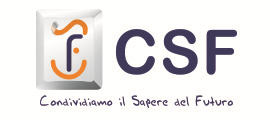

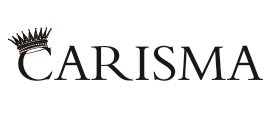


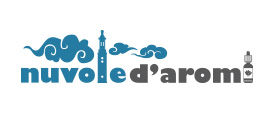









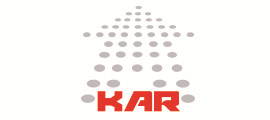

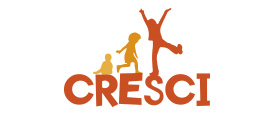
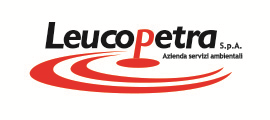




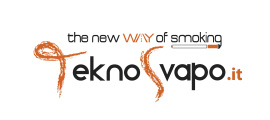


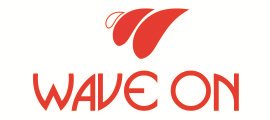
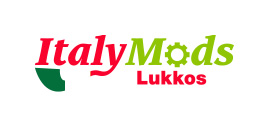


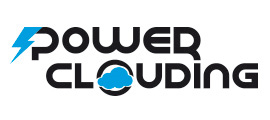

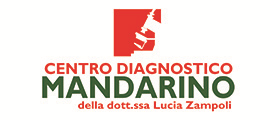

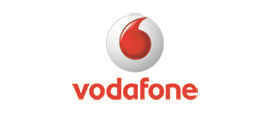
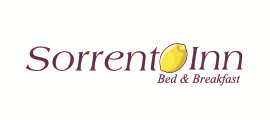



















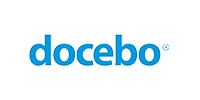



Comments